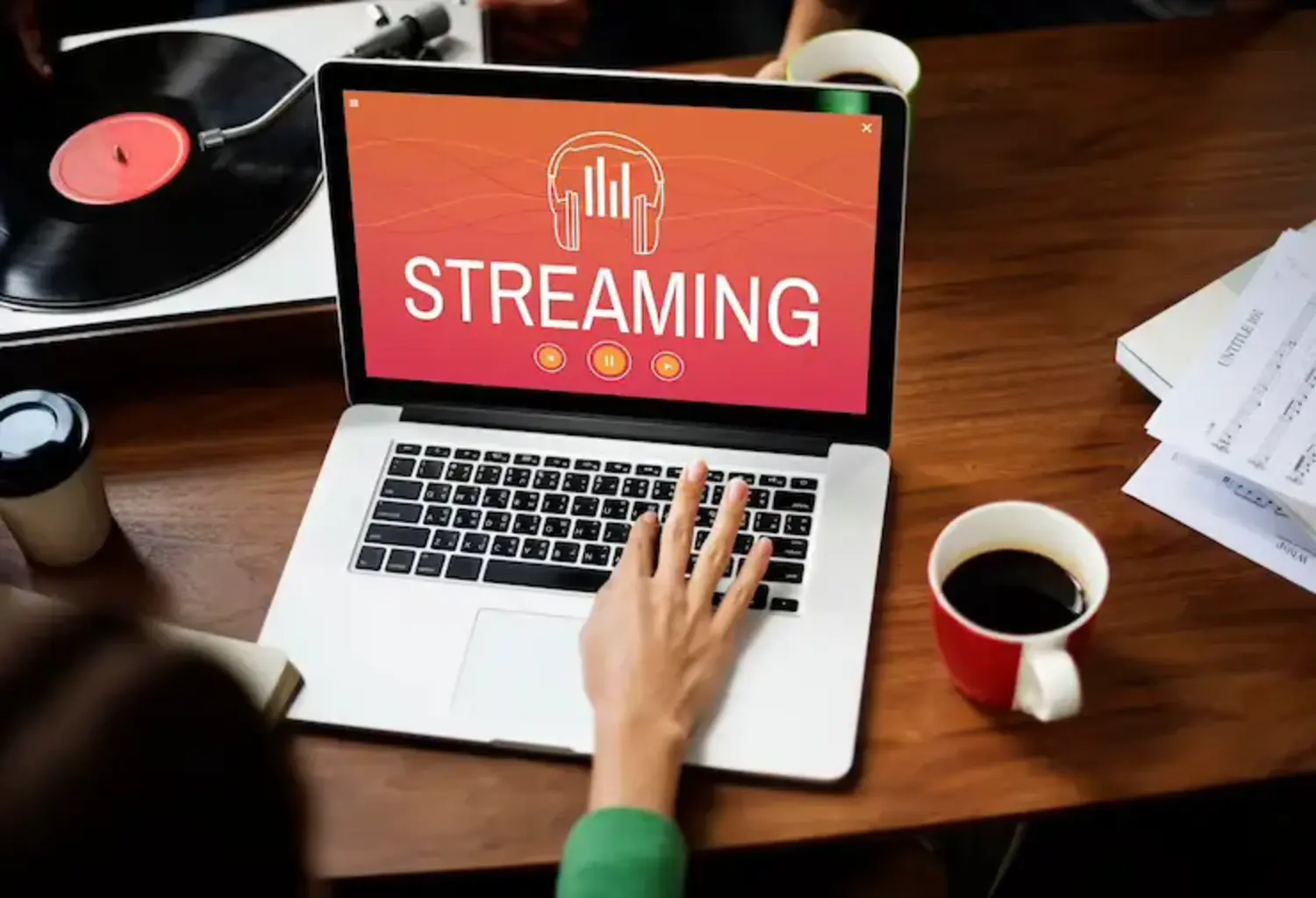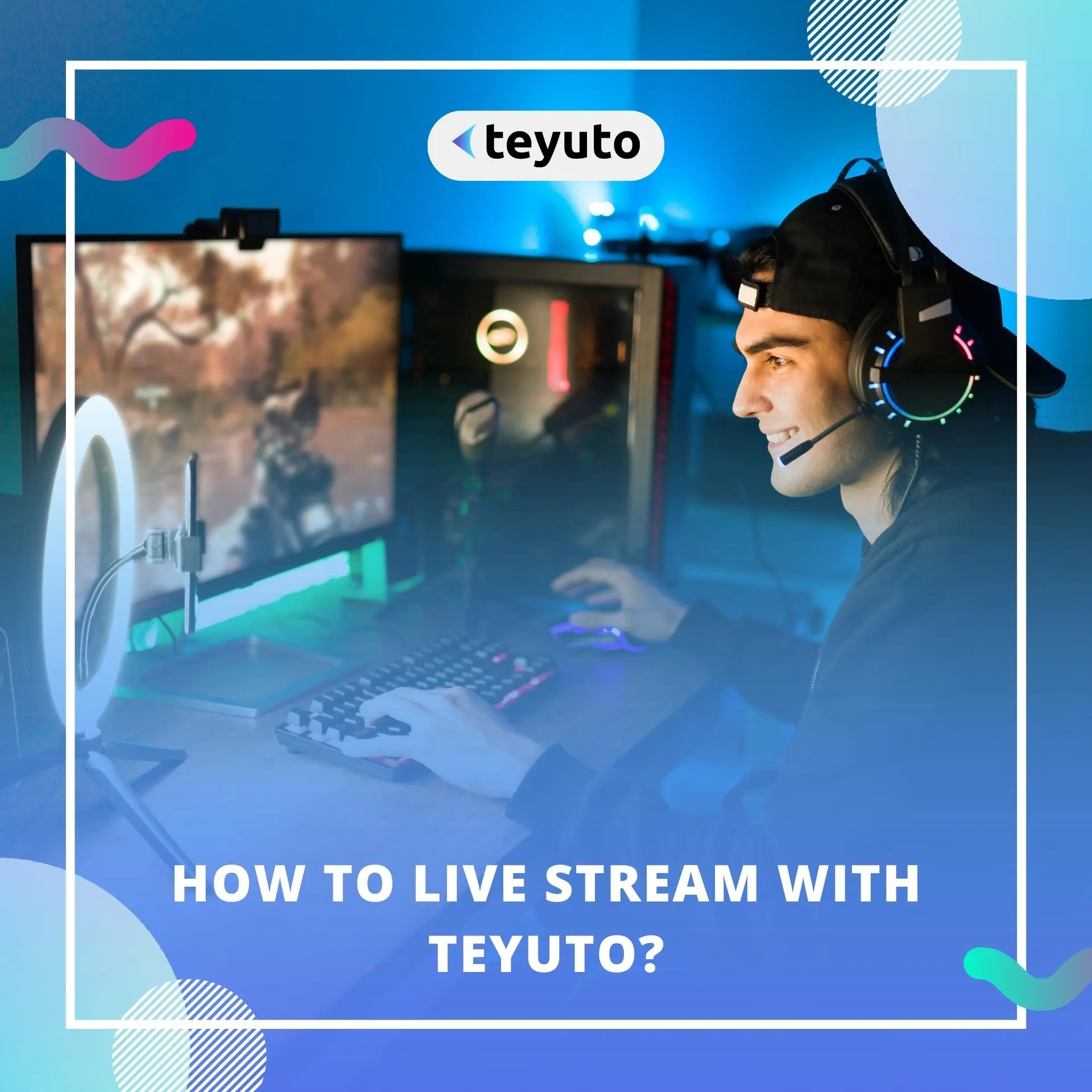5 Steps to Build a Streaming Platform from Scratch
The rising popularity of cloud video content has led to the emergence of successful business models, with Netflix being a prime example of an over-the-top (OTT) platform. Offering a wide variety of movies and series, streaming services like Netflix cater to the evolving demands of their audiences.
As of the fourth quarter of 2022, Netflix boasted over 230.7 million subscribers, while other popular streaming services, such as Hulu, Disney+, and HBO, recorded 47 million, 235.7 million, and 96 million subscribers, respectively.
In today's hyper-connected world, cloud video streaming is revolutionizing online sales and generating substantial revenue, all at a minimal investment.
Why build a cloud streaming platform for product marketing?
Effective interaction with the audience
The global TV and radio broadcasting industry has added around $27 billion between 2021 and 2022, growing its market size from $374.55 billion in 2021 to $401.25 billion in 2022. However, cord-cutting is a dominant trend that plagues the worldwide market. A recent report by TVTech reveals that 5.9 million American households cut the cord in 2022, a 1.2 million increase in cord-cutters vis-à-vis a year before.
This development barely comes as a surprise. It is because the internet provides more personalized opportunities. This holds not only for people’s entertainment needs but also for their shopping experiences. For instance, the US live stream retail sector is projected to be worth $68 billion by 2026. But why is that?
Before digital marketing came of age, business owners invested significantly in stores, premises, products, staff, and marketing to sell products online. The advent of live streaming for product marketing has changed much of that. With regular live streams and small investments in visuals, sound, and product quality, businesses can reach potential customers at a fraction of their costs.
Live streaming offers several other advantages as well, including:
- Real-time product showcasing
- Instant audience interaction
- Swift response to audience requests and feedback
- Dynamic, intuitive videos
- Simplified price consultation and product information through live-stream hosts
Selling Products is Easy Through Live Stream
Customers often prefer instant access to a product to check out its design, materials, and other aspects, which can be inconvenient when relying solely on website images and albums. Live streaming addresses this issue.
“35% of American customers purchased via a live-streamed shopping event.”
With a live stream, the seller can immediately show the audience the model, color, and price and quickly answer questions from the audience.
Low Broadcast Costs
Effective live streaming requires investment in broadcasting accessories, such as lights and multi-angle cameras, or even hiring live streaming staff. When these costs result in efficient sales, additional advertising expenses become unnecessary.
Live streaming has proven highly effective for online sellers, particularly in retail. However, sellers must strategize and invest in their live-streaming endeavors to ensure success.
How to make your own OTT streaming platform?

Build an effective online sales live stream strategy
But only assume people will start falling head over heels for your products once you start live streaming. An engaging live sales strategy is critical for capturing your audience's attention.
To achieve this, focus on the following elements:
• Visuals and sound quality
• Clear goals and objectives
• Identifying strengths and weaknesses
• Adapting to audience feedback
Creating a good live stream strategy for sales is more than just broadcasting on popular platforms like Facebook or YouTube. We need to build a good process as well.
Prepare an Engaging Script
Don't let your broadcast get "messy" just because it doesn't follow a script or doesn't spread invested content to the audience. Therefore, preparing a good script is the first step to having an excellent live stream.
Some of the considerations for your live-streaming script include the following:
- What product do you want to live stream?
- Are there multiple product lines?
- Who is your target audience?
- What content do you need to introduce?
- Is there a schedule to showcase each piece of content?
- How will you react if there is an adequate response from the audience?
Post-production Preparation for the Live Stream��
After completing the content script, we will move to giving your audience the perfect cinematic experience. You need to prepare in advance, including filming accessories, props, background, sound, and light.
Following it, your pre-shoot preparation is almost completed. The next step is to broadcast to reach the maximum potential customers. At this stage, your platform consideration will make a sizable difference. If you choose Facebook, YouTube, etc., you will be subject to the policies of these platforms. But it may help you expand your organic reach. We’ve said multiple times that such platforms should serve as the first layer (the bottom) of your viewership pyramid.
This approach will not only enable you to drive more organic traffic toward your content. Still, it will also give you excellent monetization opportunities (as you can set yourself free from their fixed-format monetization coupled with an exorbitant monetization fee). You can also enjoy superior creative control over your content, considering video platforms tend to suspend and terminate accounts sometimes for very vague reasons.
Choose a Monetization Model

Over-the-top (OTT) platforms offer various monetization models to generate revenue. The most common models are:
Subscription Video on Demand (SVOD):
Users in this model pay a monthly or annual subscription fee to access the platform's content library. The content is typically ad-free and can be accessed via several popular devices. Netflix, Hulu (ad-free version), and Amazon Prime Video are examples of SVOD platforms.
Advertising Video on Demand (AVOD):
Advertising is used to generate revenue in this model. Users can view the platform's content for free, but they must first watch advertisements before, during, or after the video. YouTube, Tubi, and Pluto TV are examples of AVOD platforms.
Transactional Video on Demand (TVOD):
Users of TVOD make pay-per-view purchases of individual works of the content, such as movies or episodes. Users can buy or rent content using this model without committing to a subscription. TVOD platforms include, for instance, iTunes, Google Play Movies & TV, and Amazon Prime Video rental/purchase choices.
Hybrid model:
Several OTT platforms use various monetization strategies to meet the needs of various users and increase income. For instance, Amazon Prime Video offers subscription-based access to a content library and TVOD possibilities for new titles. In contrast, Hulu offers both SVOD (ad-free) and AVOD (ad-supported) plans.
Final Step: Choosing a Reliable OTT Cloud Video Platform
How to create your own video platform with Teyuto?

How to live stream with Teyuto?
- Sign up for a Teyuto account:
Go to the Teyuto website (/) and sign up for an account. Choose the plan that best suits your needs based on features and pricing. Teyuto also has a plan that’s free forever.
- Customize your streaming platform:
Once you've signed up, you can access the Teyuto dashboard. Use the customization tools to design the appearance of your streaming service, including branding, colors, and layout.
- Set up payment options:
Configure your payment gateways to accept payments from subscribers. Teyuto supports various payment methods, so choose the ones that best suit your target audience.
- Content acquisition and licensing:
Obtain the rights to stream the content you want to offer on your platform. This may involve negotiating licenses with content creators or purchasing content from distributors.
- Upload and organize content:
Use the Teyuto dashboard to upload your content and organize it into categories, playlists, or channels. You can also add metadata like titles, descriptions, and thumbnails to make it easy for users to discover your content.
- Implement user authentication and access control:
Set up user registration, login features, and access control for your content. You can choose free or paid tiers and create different subscription plans with varying access levels to your content.
- Promote your streaming service:
Use marketing and promotional strategies to attract users to your platform. Utilize social media, content marketing, and advertising to reach your target audience and generate interest in your streaming service.
- Monitor and analyze performance:
Use Teyuto's built-in analytics tools to monitor your platform's performance, track user engagement, and gain insights into how you can improve your service.
- Maintain and grow your streaming service:
Regularly update your content library, engage with your audience, and adapt your strategies based on user feedback and performance data. Keep up with industry trends and advancements in streaming technology to stay competitive.
Also read: How to build an OTT streaming service like Netflix with Teyuto?
What kind of videos should be on your white-label video platform?
There are no restrictions on the type of video. Only one thing is essential: you must offer the audience real value. Otherwise, viewers will most likely not return or even cancel their membership. For example, your videos should be entertaining, educational, or both.
Examples of possible video types:
- Video courses and webinars
- Textbooks
- Movies and series
- Documentation
You must define your target group and tailor the content to your niche. There are numerous topics for OTT content, such as:
- Sports programs or teaching aids
- Video about food and cooking,
- Programming courses,
- Language classes,
- Software tutorials,
- And many others!
Why Personal Live Streaming channel?
The most significant benefit of having your video platform is the ability to monetize your content. You are not bound to use existing powerful platforms such as YouTube to follow particular payment terms.
Plus, everyone has access to your content.
Visible Benchmarks. Evaluates the effect of your unparalleled reach on sales. You can find fresh leads here to add to your marketing funnel.
Metrics for Brand Search: This shows the effect of your advertising in attracting new clients. You can use it to assess your visibility on other social media platforms.
Brand Building: Monitor changes in how people perceive your brand. This measure helps monitor shifts in audience demographics.
With a subscription, you can directly earn income, and at the same time, you will have customer information and contact details. And, of course, you can control who can see your content. Another advantage is that you determine the content of your platform yourself rather than following the recommendations of others.
Conclusion
Having your video platform can be lucrative as a standalone business model. Not only can it increase your conversion rate, but it also accelerates your business through advertising, affiliate marketing, or subscriptions to increase income.
